Some how I can't get gridwidth to work in GridBagLayout in my simple SwingApp.
I have this code in Java Swing:
import javax.swing.JFrame;
import javax.swing.JLabel;
import javax.swing.JPanel;
import javax.swing.border.Border;
import javax.swing.BorderFactory;
import javax.swing.JButton;
import java.awt.GridBagLayout;
import java.awt.GridBagConstraints;
class GridBagLayt extends JFrame {
GridBagLayt()
{
JButton jb1 = new JButton("1");
JButton jb2 = new JButton("2");
JButton jb3 = new JButton("3");
JButton jb4 = new JButton("4");
JButton jb5 = new JButton("5");
GridBagLayout lay = new GridBagLayout();
GridBagConstraints cons = new GridBagConstraints();
setLayout(lay);
cons.fill = GridBagConstraints.BOTH;
cons.gridheight = 1;
cons.weightx = 1;
cons.weighty = 1;
cons.gridx = 0; cons.gridy = 0;
cons.gridwidth = 2;
lay.setConstraints(jb1, cons);
add(jb1);
cons.gridx = 2;
lay.setConstraints(jb2, cons);
add(jb2);
cons.gridx = 0; cons.gridy = 1;
cons.gridwidth = 1;
lay.setConstraints(jb3, cons);
add(jb3);
cons.gridx = 1;
cons.gridwidth = 2;
lay.setConstraints(jb4, cons);
add(jb4);
cons.gridx = 3;
cons.gridwidth = 1;
lay.setConstraints(jb5, cons);
add(jb5);
setDefaultCloseOperation(JFrame.EXIT_ON_CLOSE);
setSize(700,200);
setVisible(true);
}
}
public class SwingApp {
public static void main(String[] args) {
new GridBagLayt();
}
}
But instead I get this:
I really don't know what the problem is, the coordinate and gridwidth seems ok to me, and I expected this to work, but it's not. And if I add four more buttons between this two rows, then the third row seems OK, but I don't want that:
Example: If I add this code
cons.gridx = 0; cons.gridy = 0;
cons.gridwidth = 2;
lay.setConstraints(jb1, cons);
add(jb1);
cons.gridx = 2;
lay.setConstraints(jb2, cons);
add(jb2);
cons.gridx = 0; cons.gridy = 1;
cons.gridwidth = 1;
lay.setConstraints(jb3, cons);
add(jb3);
cons.gridx = 1;
lay.setConstraints(jb4, cons);
add(jb4);
cons.gridx = 2;
lay.setConstraints(jb5, cons);
add(jb5);
cons.gridx = 3;
lay.setConstraints(jb6, cons);
add(jb6);
cons.gridx = 0; cons.gridy = 2;
lay.setConstraints(jb7, cons);
add(jb7);
cons.gridx = 1; cons.gridy = 2;
cons.gridwidth = 2;
lay.setConstraints(jb8, cons);
add(jb8);
cons.gridx = 3; cons.gridy = 2;
cons.gridwidth = 1;
lay.setConstraints(jb9, cons);
add(jb9);
Then I got this:
But I don't want this second row






